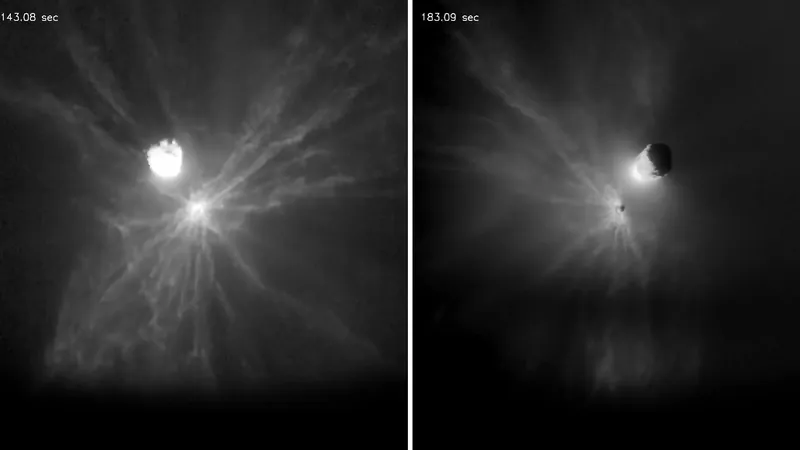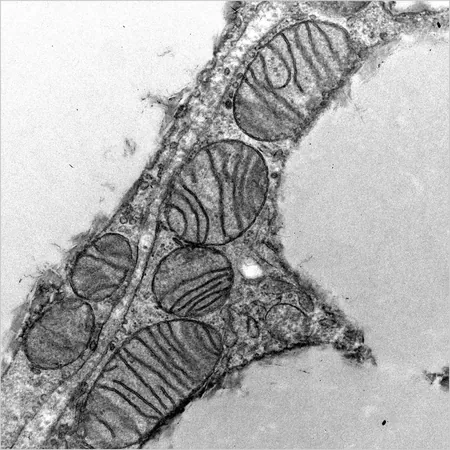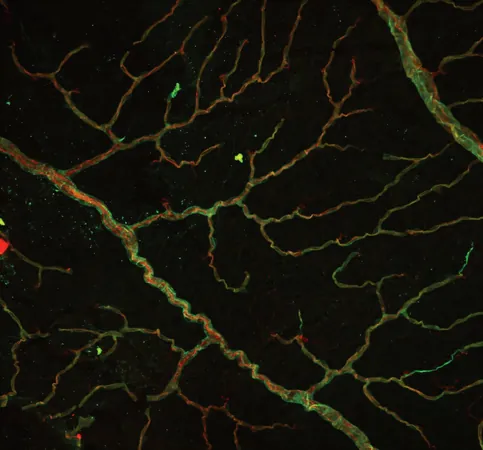
NASA's Asteroid Crash Strategy Faces Surprising Twist: DART Ejects Massive Debris!
2025-07-09
Author: Wei Ling
Unexpected Twists in Earth's Defense Against Asteroids
NASA's DART mission made headlines when it collided with the asteroid Dimorphos, but new revelations suggest that the impact had more complications than initially thought. Upon crashing, DART didn't just strike the asteroid; it smashed into two gigantic boulders that subsequently ejected debris into space, launching Dimorphos on an even more altered trajectory.
On September 26, 2022, the Double Asteroid Redirection Test struck the 558-foot-wide (170-meter) rock, effectively reducing Dimorphos' orbital period around its larger companion, Didymos, by approximately 32 minutes. This was a groundbreaking moment aiming to demonstrate that humanity could potentially redirect hazardous asteroids on a collision course with Earth.
Asteroids Aren't Just Rocks—They're Complicated!
However, the collision revealed intricacies in asteroids’ structure and behavior that complicate our asteroid defense strategies. An Italian cubesat named LICIACube, which traveled with DART, captured stunning images of the impact aftermath, showcasing two remarkable clusters of boulders, varying from 1.3 to 23.6 feet (40 cm to 7.2 m), speeding away from the collision site.
"The boulders were clustered in distinct groups, not scattered randomly," stated Tony Farnham, an astronomer and lead researcher. "This suggests there are unknown factors influencing their behavior." Indeed, these boulders provided more than three times the momentum initially contributed by DART.
Revising the Playbook for Asteroid Defense
Farnham elaborated, "We did manage to shift the asteroid's orbit, but the additional momentum from the boulders nearly matched the spacecraft's own impact. This additional force shifts how we need to approach future missions aiming at asteroid redirection."
Unlike NASA's earlier Deep Impact mission, which targeted a smooth surface, the rugged terrain of Dimorphos had significant implications on the impact's outcomes. Jessica Sunshine, a professor involved in both missions, theorizes that DART's solar panels struck two substantial boulders just before the spacecraft’s primary body made contact.
The Cosmic Pool Game: A New Strategy?
The southern cluster of ejected boulders, primarily believed to originate from a 10.8-foot (3.3-meter) boulder named Atabaque, accounted for 70% of debris and was moving at speeds up to 32 miles per second (52 m/s). This ejection alone could have altered Dimorphos' orbital plane enough to cause a tilt of up to one degree.
The contrast between Deep Impact's outcomes and those from DART highlights the necessity of understanding how different surface characteristics affect the ejection of debris. Such insights are crucial for any future asteroid deflection missions—where one miscalculation could lead to catastrophic consequences.
The Future of Asteroid Defense: What's Next?
"If we face an asteroid hurtling towards Earth, knowing just how much we need to shift it is vital; every little detail matters," Sunshine warned, likening the task to playing a cosmic pool game where every angle makes a difference.
Looking ahead, the European Space Agency's Hera mission set for 2026 will investigate the aftermath of DART’s encounter, carefully monitoring the surrounding space for potential debris hazards.




 Brasil (PT)
Brasil (PT)
 Canada (EN)
Canada (EN)
 Chile (ES)
Chile (ES)
 Česko (CS)
Česko (CS)
 대한민국 (KO)
대한민국 (KO)
 España (ES)
España (ES)
 France (FR)
France (FR)
 Hong Kong (EN)
Hong Kong (EN)
 Italia (IT)
Italia (IT)
 日本 (JA)
日本 (JA)
 Magyarország (HU)
Magyarország (HU)
 Norge (NO)
Norge (NO)
 Polska (PL)
Polska (PL)
 Schweiz (DE)
Schweiz (DE)
 Singapore (EN)
Singapore (EN)
 Sverige (SV)
Sverige (SV)
 Suomi (FI)
Suomi (FI)
 Türkiye (TR)
Türkiye (TR)
 الإمارات العربية المتحدة (AR)
الإمارات العربية المتحدة (AR)